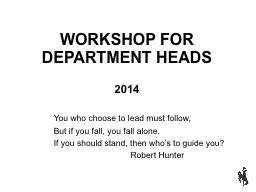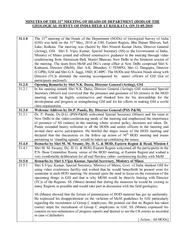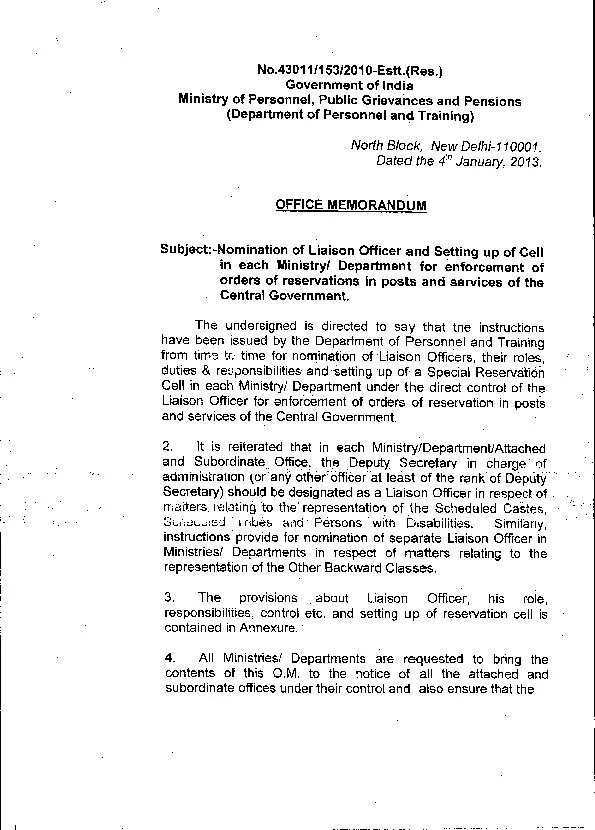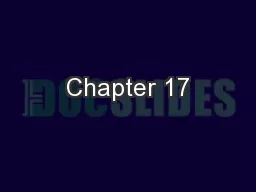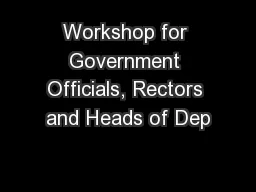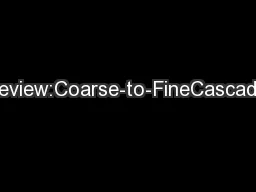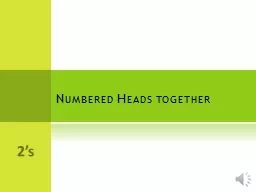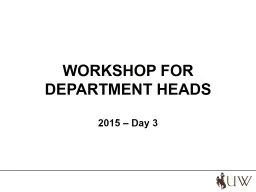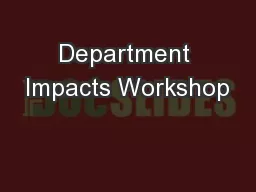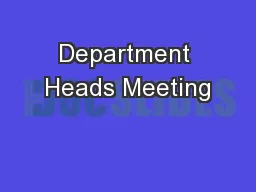PPT-WORKSHOP FOR DEPARTMENT HEADS
Author : trish-goza | Published Date : 2017-06-11
2016 You who choose to lead must follow But if you fall you fall alone If you should stand then whos to guide you Robert Hunter Role of the department head Budget
Presentation Embed Code
Download Presentation
Download Presentation The PPT/PDF document "WORKSHOP FOR DEPARTMENT HEADS" is the property of its rightful owner. Permission is granted to download and print the materials on this website for personal, non-commercial use only, and to display it on your personal computer provided you do not modify the materials and that you retain all copyright notices contained in the materials. By downloading content from our website, you accept the terms of this agreement.
WORKSHOP FOR DEPARTMENT HEADS: Transcript
Download Rules Of Document
"WORKSHOP FOR DEPARTMENT HEADS"The content belongs to its owner. You may download and print it for personal use, without modification, and keep all copyright notices. By downloading, you agree to these terms.
Related Documents

